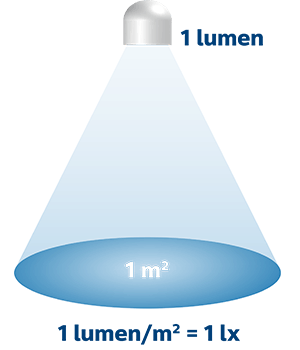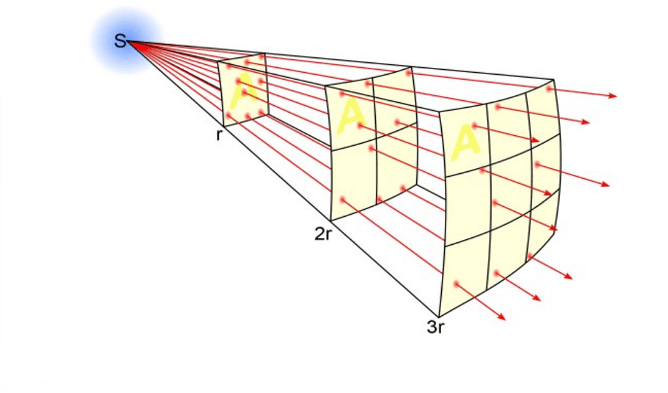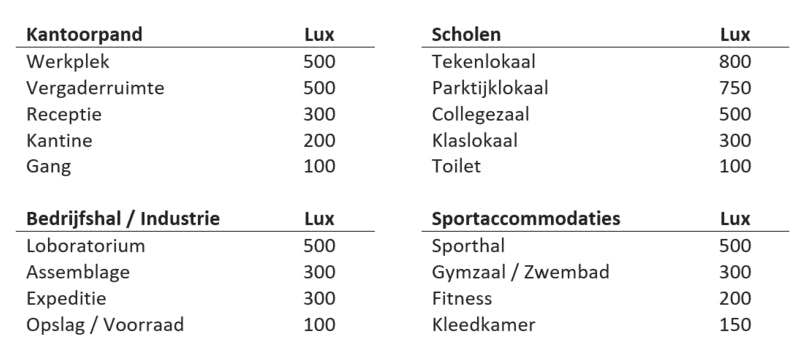Difference between Lumen and Lux

The terms Lux and Lumen are often used interchangeably. The EU has issued a guideline that all lamps have to be provided with a Lumen value indicating how much light the lamp emits. This applies to LED lighting as well as incandescent lamps, halogen lighting and HQI lamps.
Lux is used as a value to show the amount of light per square meter. 1 lux equals 1 lumen per square metre (m²).

When all the light from a 1000-lumen lamp reaches a 1m2 surface, the lux value on that surface is 1000 Lux. The greater the distance from the lamp to the surface, the less light reaches that surface.

The Lumen of a lamp is measured in a photometric laboratory with special equipment, which measures the amount of light, direction and colour that a lamp emits. These variables are expressed in the Lumen value.
How much Lux do you need?
The amount of light you need strongly depends on the application. A cozy sitting room is completely different from a doctor who needs light to perform an operation.
The European Union has set standards for lux values in various environments. See the following NEN standards for workplace lighting:











